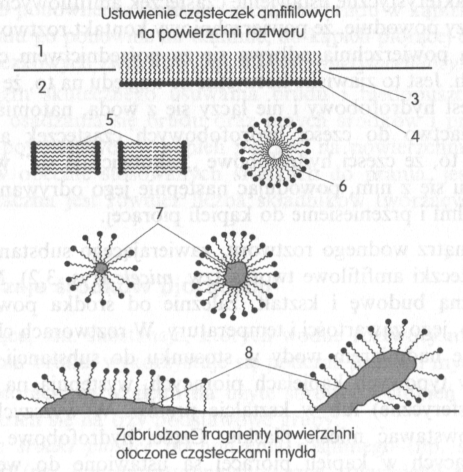 Enzymes
Enzymes
Enzymes are high molecular weight protein bodies, also called proteins. They are classified as biocatalysts, i.e.. substance, which initiate and accelerate chemical reactions, they react specifically only with certain compounds, however, they are released again after the reaction and remain available unchanged. Enzymes are essential for the functioning of organisms and control various metabolic processes, they are produced by all living cells and are natural food ingredients. Enzymes can also show their effects outside of living cells. This property, besides many others, contributed to the use of them in washing agents.
The enzymes used in laundry detergents are hydrolases, i.e.. unions, which catalyze the splitting of chemical bonds with the addition of water. Thus, they have the ability to specifically break down certain stain components, constituting dirt. These enzymes include:
- proteases - break down proteins (proteins),
- amylases - break down starch (amylaz),
- lipases - break down fats (lipids),
- cellulases - split the cotton fluff (cellulose).
Proteazy are the most common and longest-used enzymes in household detergents, including mainly in washing agents. Thanks to proteases, it is easier to remove dirt containing proteins, such as: blood, eggs, milk, cocoa, spinach and grass. No other ingredient in detergents can remove protein soil. Inaccurate removal of dirt leads to permanent stains, because as a result of the action of bleaching agents and drying, proteins are subject to oxidation and other changes. The use of proteases also removes these types of persistent dirt even at low temperatures.
Currently, the second most important type of enzymes are lips. The lipase effect is easy to remove, already at low washing temperatures, greasy stains, np. with cosmetics, frying fat, salad oils, chocolate, milk, butter, as well as grease from sweat depositing on garments. Lipase, unlike proteases, they additionally enhance the effect of surfactants.
Amylase it is used to a much lesser extent. It breaks down starch and therefore contributes to the removal of starchy stains, np. chocolate stains.
Cellulase affects cellulose fibers and their blends with other fibers. There are three main advantages to using cellulases in washing. These are: improvement of the cleansing effect, softening effect in relation to cellulose fiber and lightening (revival) colors. Fabric washed in the presence of cellulases, and then mechanically dried, is less prone to matting and pilling and does not lose its softness.
In practice, dirt has a complex structure.
Oil and grease stains, from food products, such as: olive oil, butter, Spices, sauces, Mayonnaise, consist of lipids, starch, proteins and pigments. Therefore, their effective removal requires lipase, amylazy, protease and chemical bleach.
Yogurt milk stains, creams, sera topionego, as well as stains from boiled eggs, raw and fried, contain protein and lipids. Removal of them requires protease and lipase.
Chocolate stains contain fat, protein and starch, hence lipase is needed to remove them, protease and amylase.
Use a combination of the two, three, and even four enzymes in the detergent made it necessary to stabilize them in liquid detergents, in order to avoid the degradation of the interacting enzymes during the storage process. In the case of washing powders, the enzyme stabilizing effect is achieved by introducing the enzymes in the form of granules. Microencapsulation is a prospective solution, which allows the different enzymes to be separated from each other in separate capsules.
The advantages of using enzymes are particularly significant, taking into account the requirements for modern laundry detergents. Enzymes allow you to save detergents through high efficiency and low dosing, they are easily and completely biodegradable, they are optimally effective at low temperatures (30-60°C), avoid prewash, they are gentle agents that remove stains and are conservative to fibers and colors (protect fibers and colors).